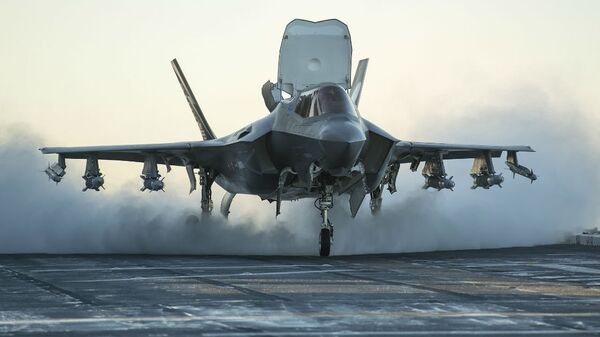"Threats are changing, and this is not the environment we grew up in," Peter Kim, Chief Information Officer at USAF said recently. The air force, like other military branches, has considered IT systems the primary arena for implementing cybersecurity measures. As the program develops, Kim noted that cyberspace needs to be better secured, since many of the F-35’s weapons systems hinge on functioning computer networks.
Specifically, Kim points to the F-35’s sensor-fusion capabilities. A sensor fusion "gathers information from the aircraft’s multiple onboard sensors to create a single integrated picture of the battlefield," per Lockheed Martin, the jet’s manufacturer. The company lists the sensor fusion second on the list of "six capabilities only possible in the world’s most advanced fighter jet."
Given the seemingly endless issues that continue to ground the F-35, one wonders how the plane’s architects did not consider that cyber-invasions might compromise 'mission assurance.' Lockheed Martin specifically indicated that information obtained via sensors is shared with the rest of the fleet through "secure datalinks."
The US Air Force may be emphasizing cyber-related measures, due to the complexity of the F-35. A real-time virtual-reality display is built into the pilot’s helmet. The jet’s 'nerve center,' or Autonomic Logistics Information System, provides ongoing maintenance assistance and equips pilots with mission-planning capability. The F-35’s Electro-Optical Targeting System uses lasers for reconnaissance purposes and to deliver laser- and GPS-guided missiles and weapons. By penetrating even just one weapon system on the plane, the F-35 network could be thrown into jeopardy in an instant.
“How do we start building resiliency? When something touches a weapons system, it will touch a network," Kim said.
One tactic the USAF has taken to bolster cyber defense is to activate "cyber-squadron" pilot programs. The service dedicates teams at airbases around the world to conduct cyber-patrol missions of key networks, according to Kim.
The overarching aim is to "operationalize" with built-in cybersecurity technologies to "support the combatant commander more than we ever have in the past," said Col. Robert Cole, director at the air force "Cyber Forward" program.



